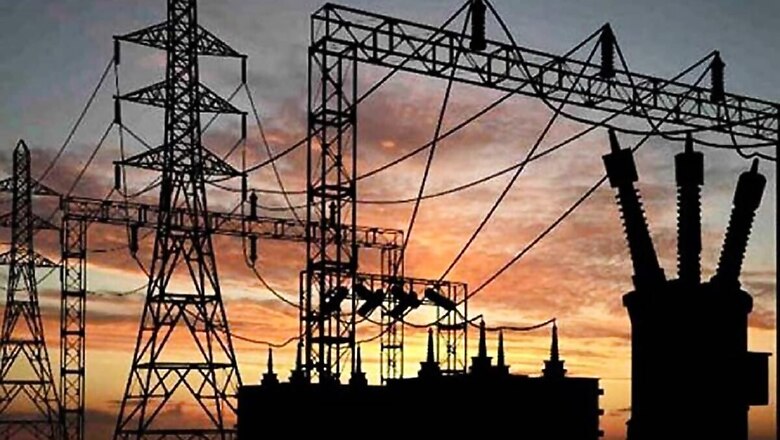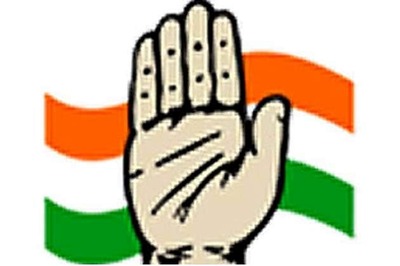
views
The page for renewable energy has turned. Today, there is a greater appreciation among policy makers, industry stakeholders and the general public about the crucial role that renewables can plan in accelerating universal electrification efforts in India and around the world. The Central government continues to make progress towards its dual commitment of installing 175 gigawatts of clean energy by 2022, and of achieving universal electrification. Foreign governments are pitching in to help India achieve its climate change commitments; state governments are beginning to institute thoughtful policies to attract their share of investments; and building on this momentum, entrepreneurs and large companies alike are beginning to take this opportunity seriously. While the cost of photovoltaic panels has been rapidly declining, there are a number of hurdles which fundamentally threaten to keep solar—and hence, electricity— inaccessible for the typical low-income rural community in India.
Challenges affecting the rapid adoption of Mini-grids
Mini-grid sector in India has played a critical role in ensuring reliable access to electricity for all, especially for rural communities. Despite the obvious benefits, the following challenges continue to affect the rapid adoption of mini-grids in India.
The cash outlay for solar mini-grids is much smaller than conventional power sources like thermal or coal plants. But the latter has significant economies of scale and greater longevity. As a result, the levelled cost of electricity (over their lifetime) is much more favourable than solar.
Solar mini-grids (unlike grid-connected installations) require additional components. These range from civil structures, poles, and cables (which tend to already be available in grid-tied installations), additional power control electronics, and critically, batteries; all of this significantly increases the Capex of mini-grids. This Capex is distributed across many different components, making it difficult to get major aggregate cost reductions for mini-grids.
READ: Power for All: The Road Ahead for India’s Rural Electrification Drive
Lead-acid batteries—the default energy storage mechanism for mini-grids in Indian and other developing countries—have major technical challenges that limit their performance and durability. These problems occur due to high ambient temperatures, discharging below 50% capacity, and operating for an extended period in a partial state of charge. Lithium ion, the choice in industrialized countries, is projected to remain expensive in the foreseeable future. While some other promising chemistries are emerging, none is available on the market at a reasonable cost.
All these challenges have historically made the economics of solar Mini Grids too expensive for traditional government-run utilities, and particularly for utilities via public-private partnerships (the likes of which currently serve a number of India’s largest cities). With India also being home to the world’s largest population without electricity, no other country in the world today faces such a monumental concurrency of the dual challenge of enhancing electricity access and reducing environmental footprint.
Role of mini-grids in powering rural India’s economic aspirations
The vast majority of solar installations in India—like in the rest of the world— are connected to the grid, supplementing conventional power sources such as coal. These installations can range from 100 kilowatts, up to a few megawatts. The proliferation of such grid-tied systems is critically important for combating climate change, for reducing pollution and for meeting the country’s ever-growing demand for electricity. However, some 237 million Indians in rural areas are currently not connected to the grid, and an equal number does not have access to reliable electricity. Therefore, all the grid-connected solar—which represents the bulk of the investment and attention—probably will not make much of a difference to India’s rural populations. . Most of the rest of the attention in the solar space is on small home systems, which are only enough to power LED lights and charge mobile phones. This, too, is good for providing basic amenities to low-income communities, but falls well short of the level of electricity required to power appliances, schools, clinics, or enterprises, all of which are necessary for low-income rural communities to live quality, productive lives.
The solution for electrifying most of rural India lies in the mini-grids with 15-100 kilowatts of peak power, enabled by storage. They can be installed as relatively small, islanded systems to provide electricity to communities of about 1,000 people. As the main grid expands, these mini-grids can gradually be absorbed into the larger grid and become an intrinsic part of India’s power generation infrastructure.
How can we address the challenges in the mini-grid sector and accelerate their adoption?
In order to improve the adoption and preference of mini-grids among consumers and industry players, we need to focus more on technology innovations, the business value chain, and specific policy changes.
Technology innovations
It is important to focus on technology innovations such as better batteries, availability of energy efficient appliances and affordable mini-grid components. These will reduce the capital requirement and promote faster adoption of mini-grids. Integration of mini-grid components improved with standardization, metering, automated billing and collection, and inverter and charge control electronics will bring down the costs. Further, affordable, and energy-efficient appliances will reduce the cost and energy consumption of refrigerators, and irrigation pumps for developers and customers alike.
Capital infusion and infrastructure development
For each of these innovations, the best technology may not automatically win in the marketplace. Key considerations include market demand, capital investments required for manufacturing, strength of the supply chain and availability of the necessary materials, infrastructure, and workforce. Hence, in addition to evaluating and developing the above technologies, it will be critical to conduct a thorough operational analysis to determine the feasibility of large-scale manufacturing in India. Established private sector players will need to make pivotal investments and catalyze investments from others along the value chain.
Supportive policy action
Public-private partnerships (PPPs) between the government and private utility companies, much like those used to provide electricity to India’s largest cities. This model has proven itself in urban centres and can work in rural areas as well. Allowing access to existing public infrastructure in areas where there is a government grid but unreliable or inadequate supply of electricity. This can significantly reduce the capital cost of setting up mini-grids. This also lays the foundation for thousands of such distributed solar power stations to—over time—be integrated into the national grid. Incentives for community electrification, modelled after the Swachh Bharat initiative (which promotes construction and use of toilets), to encourage household and community-level electrification. For instance, subsidies for households to have their homes connected, with additional community-level incentives for payment of bills, etc.
With an improvement in mini-grid technology and the availability of energy efficient appliances, mini-grids will play a critical role in powering rural economies and providing reliable access to electricity for all.
The author is the CEO, Smart Power India. Views are personal.
Read all the Latest News, Breaking News and Coronavirus News here




















Comments
0 comment